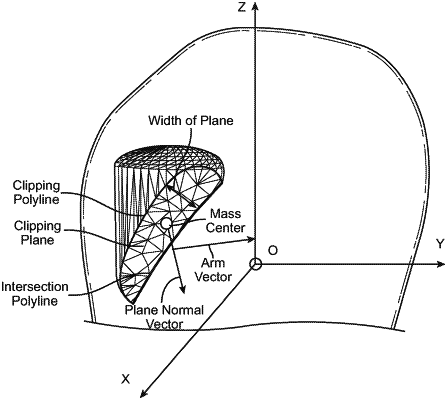| CPC A61C 7/002 (2013.01) [A61C 7/00 (2013.01); A61C 7/08 (2013.01); A61C 7/14 (2013.01); G06F 17/10 (2013.01); G06F 30/00 (2020.01); A61C 7/146 (2013.01)] | 22 Claims |

|
1. A method for designing a tooth attachment for eliciting a selected movement of a patient's tooth, the method comprising:
receiving a digital model of the patient's tooth;
determining a movement path for eliciting the selected movement when applied to the patient's tooth;
determining a geometry for an attachment based on the determined movement path, wherein the geometry of the attachment extends from an occlusal end to a gingival end, the gingival end of the attachment geometry comprising a clipping plane surface defined by a plurality of clipping plane parameters, the plurality of clipping plane parameters comprising a first angle and a second angle, wherein the determining the geometry comprises:
setting the first angle based on the determined movement path to provide a force in an occlusal-gingival direction, wherein the first angle is relative to an occlusal plane of the patient and is more than 0 degrees relative to the occlusal plane; and
setting the second angle based on the determined movement path to provide a torque about a longitudinal axis of the patient's tooth, wherein the second angle is relative to a second plane extending along the longitudinal axis and a buccal-lingual axis of the patient's tooth and is rotated about the longitudinal axis more than 0 degrees relative to the second plane; and
fabricating the attachment to have the geometry comprising the first and second angles when attached to the patient's tooth.
|